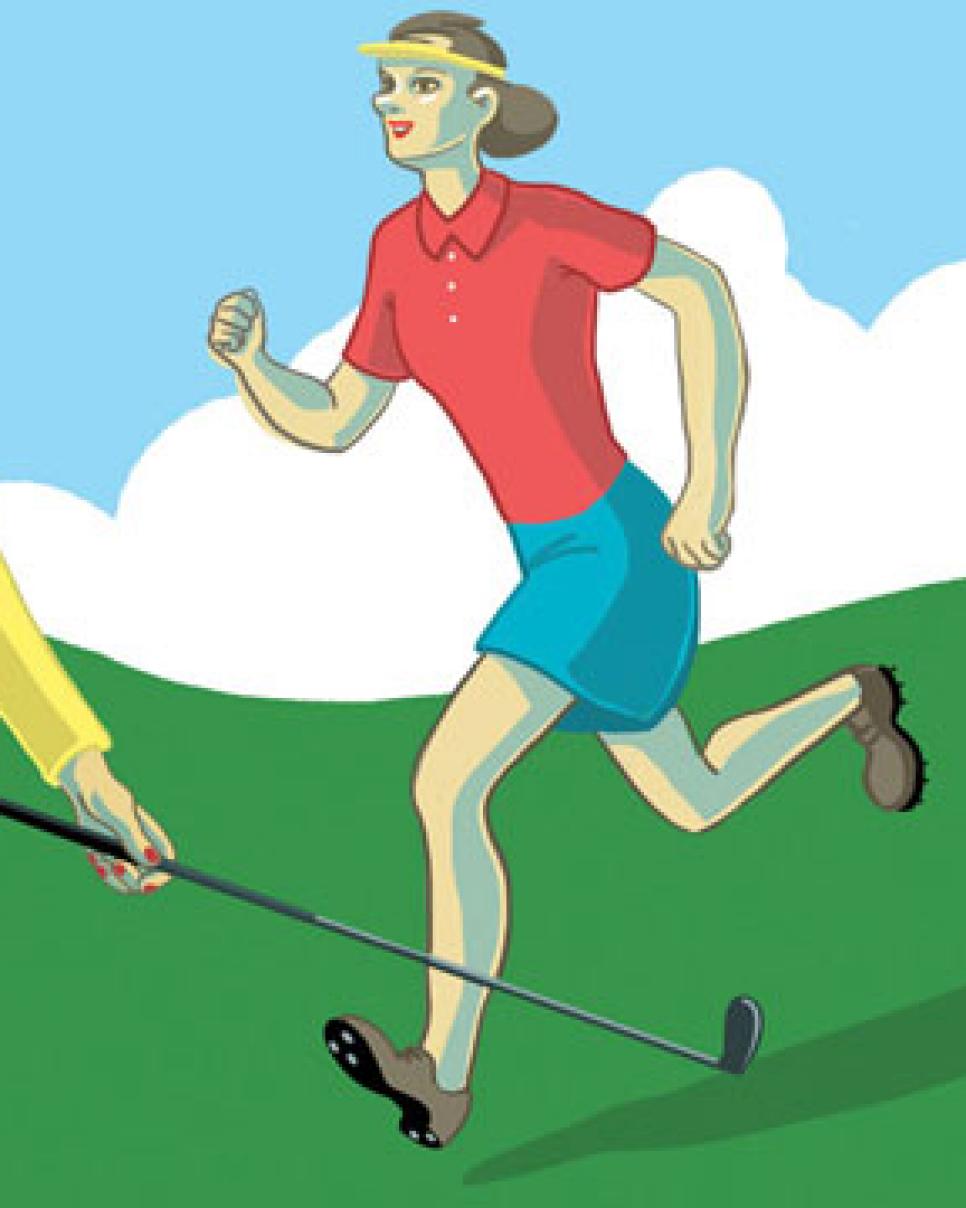News
Female Trouble

'We've seen women pull things on the course guys never would.' --Lynn Marriott
In golf-industry parlance, the dismissive, rude, even cruel behavior we see some men exhibit toward women is known as a "barrier to entry." In practical terms, a woman has to damn near burn with desire to play a game that is historically, culturally and demographically dominated by the other sex.
Though men control the playing field, they aren't the only bad actors out there. Women exhibit plenty of meanness and guile; they just express it differently, more subtly, and in culturally determined ways. Men can be hostile to women they perceive as invading their sacred playing grounds, but women, who have no claim of propriety to the course, tend to take out their frustrations and aggressions on each other.
Pia Nilsson and Lynn Marriott, longtime savants of golf and human behavior, teach lessons to all-men, all-women and co-ed groups at their Arizona academy. "Men are pretty upfront in the way they act," Nilsson says. "They're always teasing, being sarcastic, needling each other. Women interact differently. Not always, but often, we'll see that they talk behind each other's backs. They watch and whisper, 'Oh, she's not very good.' They do the whole comparison thing right away: the clothes, the body, the level of play."
Adds Marriott: "We've seen women pull things on the course guys never would. When guys putt a ball inside the leather, they usually give the putt and pick up. Women make each other putt the ball. They know you can miss. They want you to miss, to see you embarrass yourself."
Golf rules, it turns out, are one of the singular and favored forms of female torment. In the magazine Golf for Women, where I was editor-in-chief, we once ran an article called "Attack of the Rules Queens," which described devious players who intimidate opponents and less-experienced golfers with allegations of rules violations. It prompted enormous reader reaction.
"Thank you for this article," one woman wrote. "It's about time we talk openly about the biddies, the pariahs, the piranhas or worse. Every course has them, and every woman golfer needs to beware." As another reader put it: "They can turn a golf round into a horror story; they've reduced players to tears, and caused other women to quit a league, or a club."
Interestingly, how males and females react to a good performance also sometimes differs. One former LPGA pro who has spent time on the men's and women's tours observes: "You walk into the players' lunchroom on the PGA Tour, and guys seem genuinely happy for the person who walks in who's played well. The mood in the LPGA Tour players' lounge can be different. A woman walks in after a great round, and the response isn't always supportive. You can sometimes feel the resentfulness, the jealousy."
Though the premise of the accompanying article can be true--that men are often unwelcoming to women on the golf course--when we dig deeper, we see that women can be exclusionary as well. Marriott remembers being a talented junior golfer in upstate New York and trying to play with the adult women's groups at her club. "No way they were going to let me play with them," she recalls. "I guess they thought I would make them look bad."
So what are we to conclude? After years of studying humans in primitive societies, Margaret Mead wrote that "feminine" and "masculine" behaviors aren't innate but result from socialization and cultural expectations. And those behaviors evolve. To that point, Nilsson and Marriott are already observing different behavior in younger golfers. "The men under 35 that we work with couldn't care less that we're women teaching them," Nilsson says. "They're not threatened. In the same way, we see some of the younger women players we work with treating each other more openly and honestly, with less backbiting and gamesmanship."
As we all continue to evolve, I'll take inspiration from my experience, and from the golfers at Southampton Golf Club on Long Island. On our weekly Ladies' Days during the summer, Susan Hobbs, the former chair of our Women's Association, has always been on the first tee, welcoming, making introductions, encouraging, cheering on the group. When a new member shows up for the first time, Susan has always put her in her foursome and arranged a follow-up game with other women.
On any given afternoon, I can arrive at the club as a single and walk to the first tee, joining a couple of guys I barely know. We'll walk the course together and commiserate about the diabolical new bunkers. By the end of the round, we've forged new friendships. It's a shared love of the game, an opportunity to meet new people. As that oldest of sayings goes, the golf ball doesn't care whether it's a man or a woman standing over it. And neither should we.